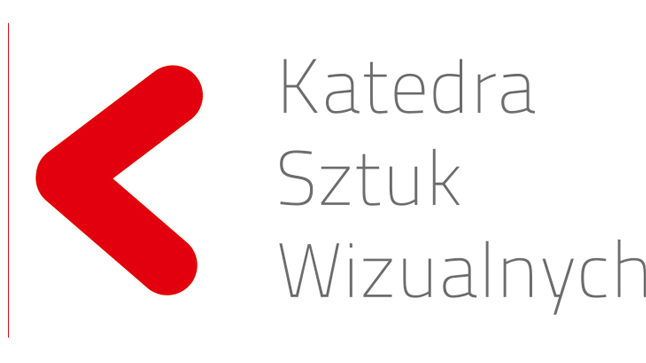PLW programie zajęć ze studentami z zakresu rzeźby i technik warsztatowych realizuję ćwiczenia mające na celu zarówno wyposażenie studenta w podstawowe umiejętności operowania technikami rzeźbiarskimi i odlewniczymi, jak i ukształtowanie wrażliwości na relacje przestrzenne i międzyludzkie. Program zaczynam od prac manualnych w postaci modelowania podstawowych naczyń w glinie ceramicznej. Celem jest zapoznanie studenta z podstawowym materiałem rzeźbiarskim, uwrażliwienie go na właściwości i możliwości tego materiału. Od początku kładę nacisk na precyzję pracy jako dobry nawyk warsztatowy. Następnie prace te poddawane są pełnemu procesowi produkcyjnemu. Student ma okazje zapoznać się z kolejnymi etapami powstawania obiektu: formowaniem ręcznym, z plastra oraz na kole garncarskim, przygotowywaniem modela i formy lejnej, przygotowywaniem prac do wypalania, czyli obróbki na sucho, układaniem prac w piecu ceramicznym oraz szkliwieniem. Dla osób chcących pogłębić wiedzę i umiejętności z dziedziny ceramiki istnieje możliwość odbycia praktyki zawodowej w Fabryce Porcelany w Ćmielowie i Modus Design Studio (www.modusdesign.com) prowadzonego przez światowej sławy artystę ceramika Marka Cecułę, z którym współpracuję. | ENWithin the curriculum of classes of sculpture and workshop techniques, I carry out exercises aimed at providing students with basic skills of using sculpting and foundry techniques, as well as forming their sensitivity to spatial and interpersonal relationships. I begin implementation of the curriculum with manual works such as modeling basic vessels in ceramic clay. The aim of these activities is to familiarize students with the basic sculpting material, as well as forming their sensitivity to its properties and capabilities. From the beginning, I emphasize the precision of work as a good workshop habit. Then, these works undergo a full production process. Students have the opportunity to familiarize themselves with consecutive stages of object formation: manual forming, from a plaster and on a potter’s wheel, preparation of a model and a mold, preparation of works for baking, i.e. dry processing, arranging works in a ceramic oven and glazing. For people who want to deepen their knowledge and skills in the field of ceramics, there is an opportunity to undergo professional practice at the Porcelain Factory in Ćmielów and Modus Design Studio (www.modusdesign.com) run by the world-famous ceramic artist Marek Cecuła, with whom I collaborate. |
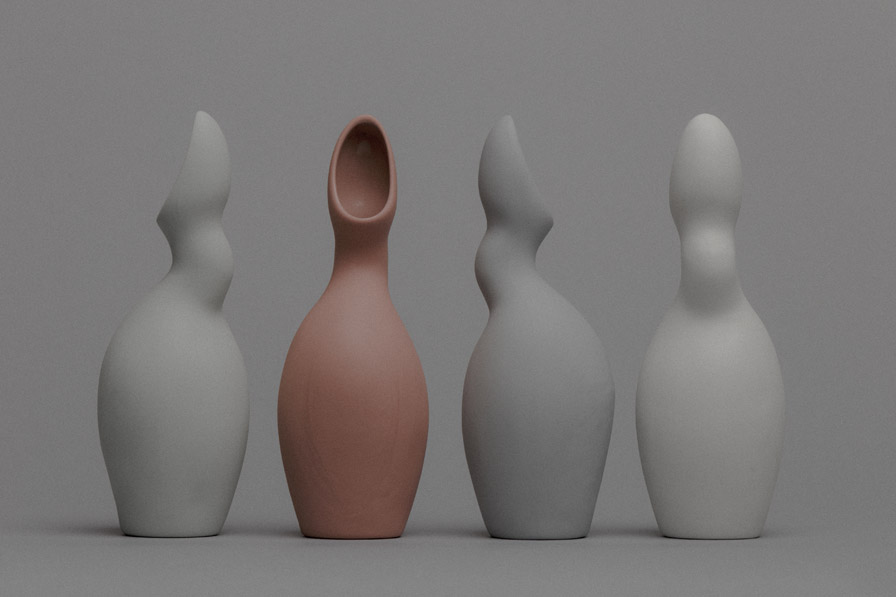
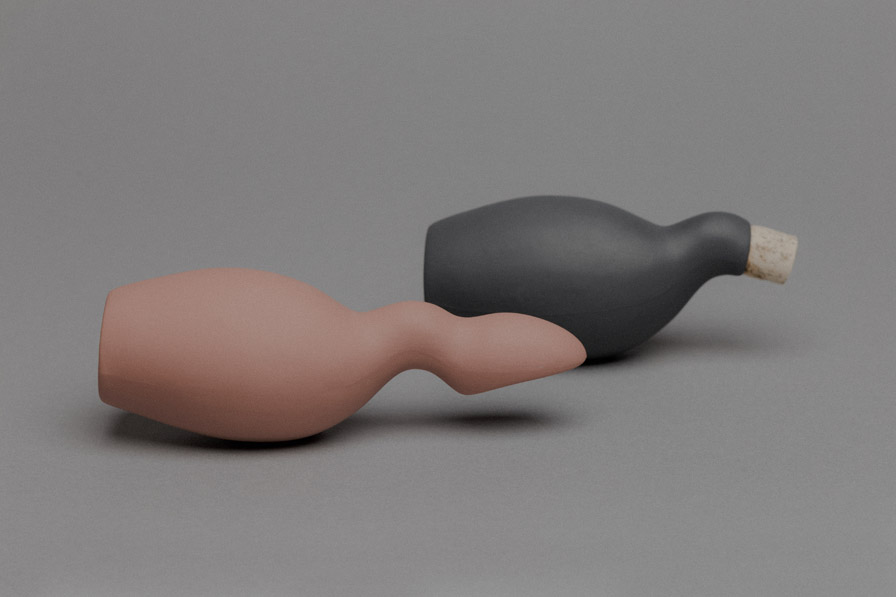
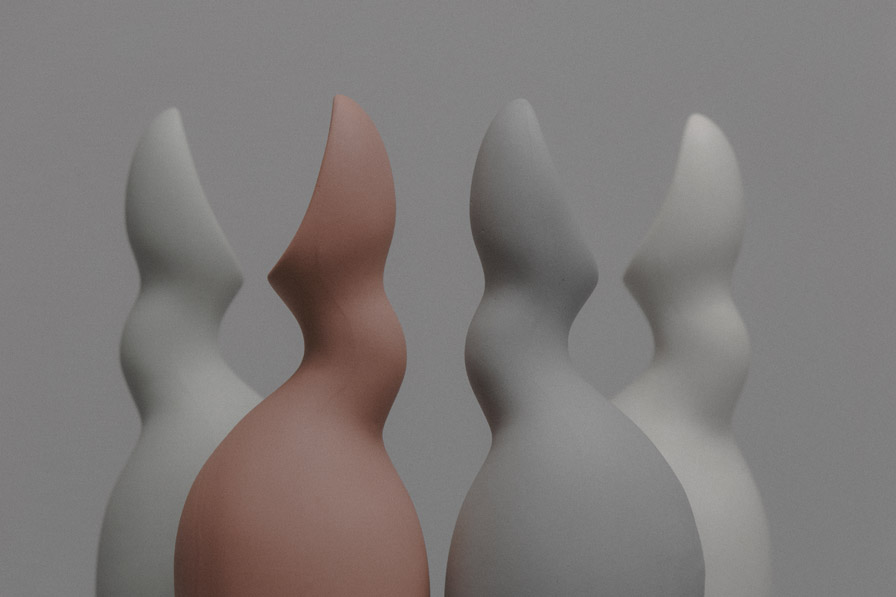
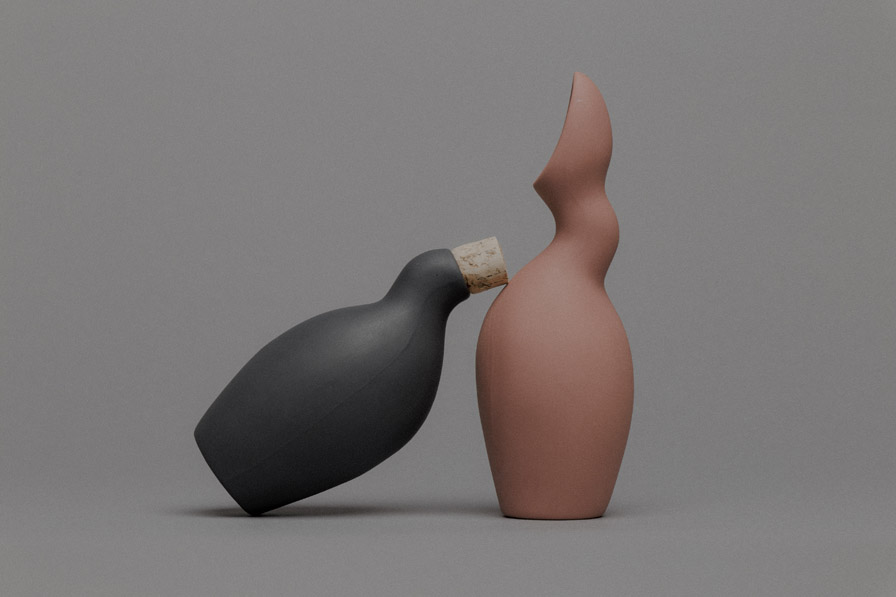
Drugim ćwiczeniem jest studium głowy ludzkiej na podstawie modela (studium z natury). W tym zadaniu nacisk kładę na poprawną obserwację anatomii i proporcji. Student ma okazję zweryfikować własny sposób postrzegania, a także wzbogacić środki wyrazu plastycznego. Następnym etapem tego ćwiczenia jest odlew wykonanego modelu glinianego w gipsie. Student zdobywa umiejętności z zakresu przygotowania negatywowych form traconych. | The second exercise is the study of a human head based on a model (study from nature). In this task, I focus on the correct observation of anatomy and proportion. Students have the opportunity to verify their own way of perception and enrich their means of artistic expression. The next stage of this exercise is a cast of a modeled clay plaster. Student acquire skills in preparation of negative lost forms. |

W następnym etapie edukacji głowa pojawia się jako temat do pierwszej próby autorskiej wypowiedzi. Student musi dokonać analizy kategorii głowy ludzkiej jako nośnika ważnych dla niego treści, przy czym ma pełną dowolność środków wyrazu, dla których jedynym kryterium wyboru ma być adekwatność do treści. Momentem weryfikacji jest publiczna obrona pracy w ramach pracowni i odpowiedź na ewentualne pytania. W tym zadaniu najważniejsza jest konfrontacja subiektywnego, wewnętrznego sposobu postrzegania i rozumowania z otoczeniem i jego schematami odbioru. | In the next stage of education, head appears as the subject for the first attempt at an personal artistic statement. Student must analyze the category of human head as a carrier of personally important content, at the same time having total freedom as far as means of expression are concerned, with adequacy to the content as the sole criterion selection. Verification of the work takes a form of its public defending within the studio and answering to possible questions. The most important element of this task is the confrontation of the subjective, inner way of perceiving and reasoning with the surrounding and its reception patterns. |
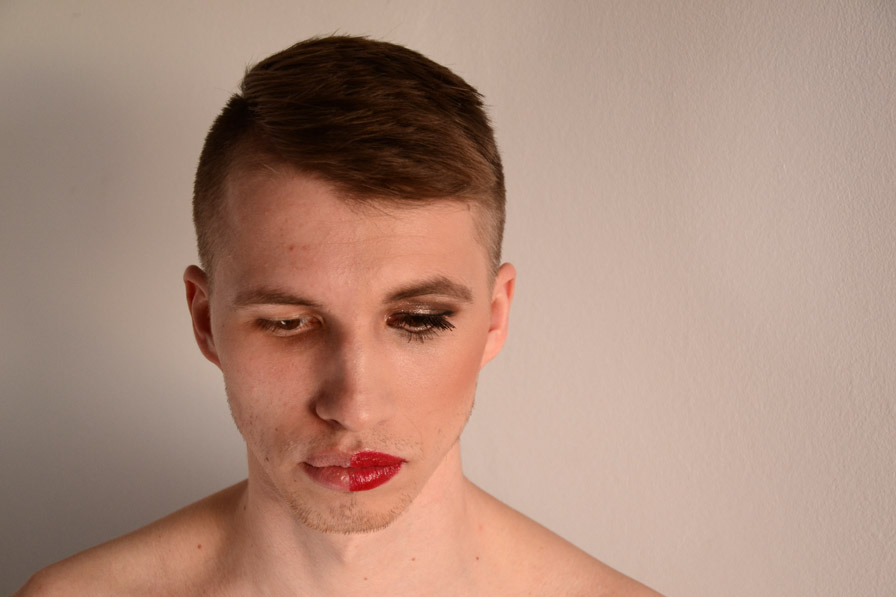
Jednym z kolejnych ćwiczeń jest wykonanie płaskorzeźby na podstawie martwej natury. W tym zadaniu student zapoznaje się z zasadami ujmowania perspektywy i posługiwania się planami oraz z transponowaniem sytuacji pełnoplastycznej na płaską. Alternatywnym ćwiczeniem jest płaskorzeźba abstrakcyjna wykonywana na zasadzie powtarzalnego modułu tworzącego spójną całość kompozycyjną. Następnie płaskorzeźby odlewane są w gipsie lub glince ceramicznej, a w nielicznych przypadkach także w innych trwałych materiałach, jak żywica poliestrowa, guma i metal. | Making a bas-relief based on still life is one of the next exercises. In this task, students learn the principles of perspective and the use of backgrounds and transposing a 3-D situation to a 2-D one. An alternative exercise is an abstract bas-relief made on the basis of a repetitive module forming a coherent compositional entity. Then bas-reliefs are cast in gypsum or ceramic clay, and – rarely – also in other durable materials such as polyester resin, rubber and metal. |
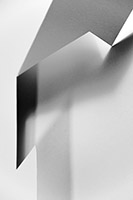
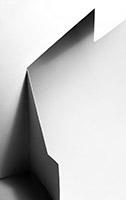
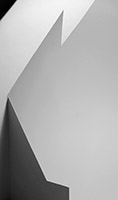
Z ćwiczeń warsztatowych przechodzę do działań kompozycyjnych. Pierwsze zajęcia polegają na wprowadzeniu i/lub powtórzeniu podstawowej wiedzy teoretycznej dotyczącej kompozycji. Odbywa się to przy aktywnym uczestnictwie studenta w cyklu interakcji, pracy w grupach oraz analizie przestrzeni miejskiej. W cyklu ćwiczeń student praktykuje świadome posługiwanie się środkami plastycznymi dla wyrażenia zamierzonego efektu. Na tym etapie wprowadzane jest pojęcie negatywu w sztukach plastycznych, a szczególnie w kompozycji przestrzennej. W wyniku tych ćwiczeń powstaje praca, w której student interpretuje zagadnienie synergii negatywu i pozytywu przedstawianego w postaci kompozycji przestrzennej z płaszczyzn. Na bazie wykonanego modelu student bada wpływ modelunku światłocieniowego i tworzy dalsze ujęcia abstrakcyjne oraz opartowe. Efekty tego ćwiczenia służą również dalszym zadaniom w zależności od kierunku i specjalności grupy. Dla studentów architektury i urbanistyki oraz architektury wnętrz i otoczenia jest to baza wyjściowa do przeskalowywania i szukania podobnych relacji w przestrzeni miejskiej. Dla studentów wzornictwa to ćwiczenie adaptowane jest na rzecz przedmiotu użytkowego bądź wybranego wnętrza. | From the workshop exercises I go to compositional activities. The first classes involve introducing and / or repeating basic theoretical knowledge of composition. This assumes an active participation of students in the cycle of interactions, group work and analysis of the urban space. In the series of exercises, students practice the conscious use of artistic means to express the intended effect. At this stage, the concept of negative in visual arts (especially in spatial composition) is introduced. In works created as a result of these exercises, students interpret the issue of the synergy of negative and positive presented in the form of spatial composition made of planes. On the basis of the created model, students examine the impact of chiaroscuro modeling and create further abstract and op-art forms. The effects of this exercise also serve further tasks depending on a faculty / specialization of particular groups. For students of Architecture and Urban Planning, as well as Interior and Exterior Architecture, this is the starting point for rescaling and looking for similar relationships in urban space. For students of Design, this exercise is adapted for the benefit of a utility object or a selected interior. |
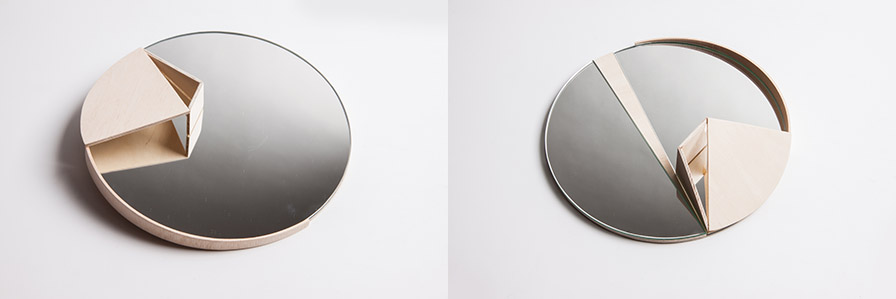
Zadaniem mającym skłonić studenta do większej analitycznej interpretacji otoczenia jest „interwencja miejska”. Student ma wybrać dowolne miejsce w przestrzeni miejskiej lub dowolny obiekt małej architektury, a następnie dokonać tam działania artystycznego poprzez sytuacyjne wykorzystanie kontekstu miejsca. Wymóg, jaki zwykle stawiam, to podnoszenie walorów estetycznych wybranego obiektu lub jego inteligentne zaakcentowanie. | The so-called "urban intervention" is a task intended to encourage students to a greater analytical interpretation of the surrounding. They are to choose any place in the urban space or any small architectonic object, and then perform artistic activity there by situational use of the context of the place. Upgrading aesthetic value of the chosen object or its intelligent emphasizing is the requirement I usually set. |
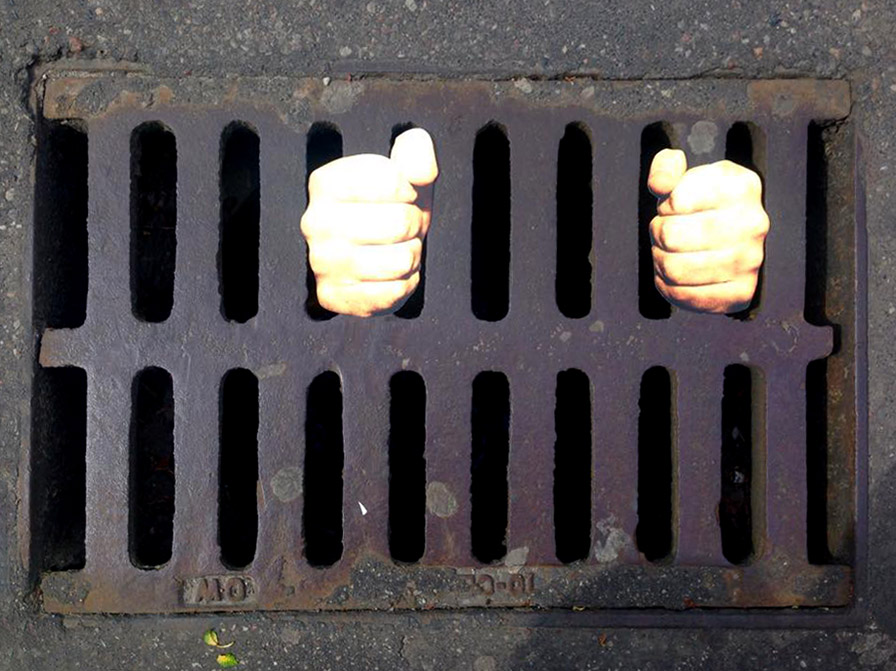
Jednym z ostatnich zadań, skierowanym głównie do studentów III, a najczęściej IV roku, jest zadanie wolne, a więc bez narzuconego z góry tematu. W założeniu ma to być autentyczna wypowiedz artystyczna studenta formułująca jego postawę twórczą. Zadanie jest poprzedzane wstępem, wówczas student przygotowuje autoreferat oraz autoprezentację na bazie wybranych zagadnień ze świata sztuki lub konkretnych postaw artystycznych, z którymi się identyfikuje. Jest to pierwsza próba zweryfikowania i nazwania własnych potrzeb twórczych, a także określenie adekwatnych środków wyrazu artystycznego w budowaniu indywidualnej świadomej postawy twórczej. Temat i przedmiot zainteresowania pochodzą od studenta. Analizuje on wybrane zagadnienie oraz poddaje eksperymentom wizualnym, które omawiane są w trybie korekt indywidualnych, a także rozmów grupowych. Efektem tego zadania jest prezentacja zewnętrza w postaci wystawy zbiorowej w publicznej galerii sztuki lub w pozainstytucjonalnym, ale ogólnodostępnym miejscu publicznym. Wśród tych wystaw szczególnie warto wymienić wystawę zbiorową Pamiątka studentów ZUT przygotowaną w TRAFO Trafostacji Sztuki w Szczecinie https://trafo.art/pamiatka/, wystawę Zawartość w Galerii Wzorcowej w Szczecinie http://m.szczecin.eu/posty/49228 oraz wystawę Living room w Galerii T w Szczecinie, Alternatywa dla osób nie czujących się na siłach w Galerii od Ulicy, Szczecin https://www.facebook.com/TVPSzczecin/videos/2171066603115837/ | One of the last tasks, addressed mainly to students of the third, and most often fourth year, is a free task, i.e. a task without a topic imposed from above. It is assumed to be an authentic artistic expression of individual students formulating their creative attitude. The task is preceded by an introduction, then students prepare a self-presentation based on selected issues from the world of art or specific artistic attitudes with which they identify. This is the first attempt to verify and name their own creative needs, as well as to determine the appropriate means of artistic expression in building an individual conscious creative attitude. The topic and subject of interest come from the students. They analyze the selected issue and subjects it to visual experiments, which are discussed in the mode of individual corrections as well as group conversations. The effect of this task is to present the outside in the form of a collective exhibition in a public art gallery or in a non-institutional, yet publicly available public place. The already organized exhibitions include: the collective exhibition of the West Pomeranian University of Technology Pamiątka prepared at TRAFO Trafostacja Sztuki in Szczecin, the exhibition Zawartość at Galeria Wzorcowa in Szczecin and the exhibition Living room at Galeria T in Szczecin, as well as Alternatywa dla osób nie czujących się na siłach at Galeria od Ulicy, Szczecin. |
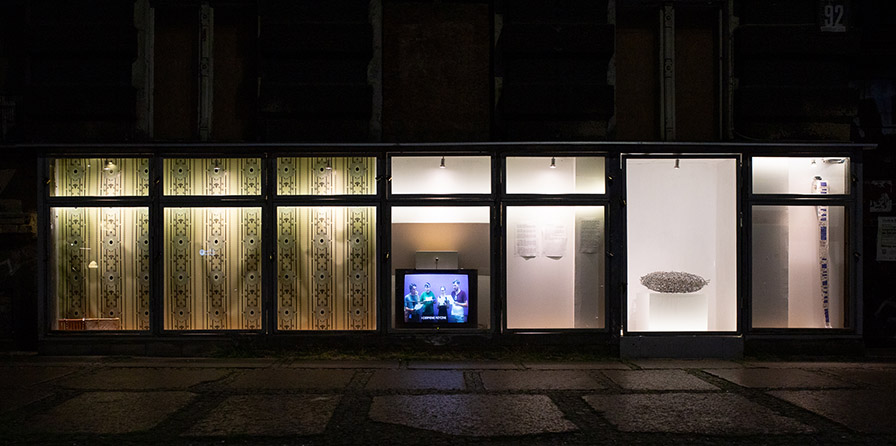
Przedstawiony program przekrojowo obrazuje zakres podejmowanych przeze mnie ćwiczeń w ramach przedmiotu rzeźba i techniki warsztatowe. Zadania te są każdorazowo modyfikowane i dostosowywane do poziomu umiejętności danej grupy studentów, a przede wszystkim do kierunku studiów i liczby zajęć w ramach danego kierunku. Co dla mnie ważne, oprócz obserwacji natury, w tym podstawowej anatomii modela, świadomego komponowania dzieła plastycznego i umiejętności tworzenia ciekawych zestawień przestrzennych, kładę nacisk na poszukiwanie przez studenta jego indywidualnej postawy twórczej. Staram się też uwrażliwiać nie tylko na materiał, proporcję, estetykę, lecz także na sposób komunikacji z widzem. | The curriculum described above presents a cross-sectional view of the scope of my exercises in the subject of sculpture and workshop techniques. These tasks are each time modified and adapted to the skill level of a given group of students, and above all to the field of study and the number of classes within a given field. What is important to me, in addition to observing nature – including the basic anatomy of the model, conscious composition of the artistic work and the ability to create interesting spatial combinations – is emphasis on students’ search for their individual creative attitude. I also try to form their sensitivity not only to material, proportion, and aesthetics, but also to the way of communication with viewers. |
